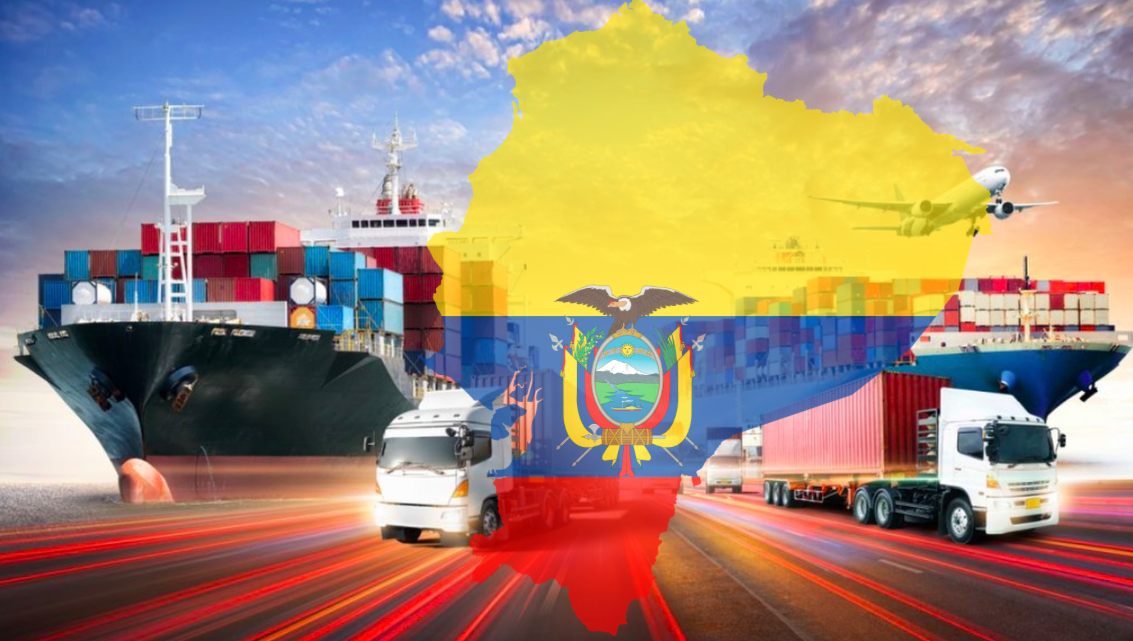RIO DE JANEIRO, BRAZIL – Five weeks -almost six- after the start of the Ukraine conflict and the unprecedented damaging sanctions against Russia, the Ecuadorian export sector recorded losses of US$85 million, equivalent to 6% of total non-oil and non-mining exports to the world in March 2022. Faced with this situation, businessmen are looking for new targets and are asking for assistance in accelerating agreements with Asian markets.
What are the challenges facing Ecuadorian exporters? There are at least five:
- Backlogged receivables
- Low prices due to oversupply in other markets
- Increased input costs
- Lower availability of transportation and higher costs
- Lack of competitiveness and taxes
Read also: Check out our coverage on Ecuador
COLLECTIONS AND OVERSUPPLY
According to the National Federation of Exporters (Fedexpor), “part of this loss corresponds to the collection portfolio with Russian buyers for shipments made in the first weeks of the financial blockade, amounting to more than US$50 million, mainly concentrated in exports of flowers and bananas.”
And although some shipments have been diverted to markets in Europe and the United States, the high concentration of volume demanded by the Russian market, particularly for bananas and flowers, “makes it impossible for an alternative market to absorb such a large volume of product without the price coming under pressure due to oversupply,” which directly affects the reduction in foreign exchange generated by the same volume of exports.

INCREASE IN INPUTS AND LITTLE TRANSPORTATION
In addition, the cost structure continues to increase due to the rise in international prices of inputs such as agrochemicals, vegetable oils and fats, paper and cardboard, aluminum, raw materials for animal feed, and higher energy costs for industrial use.
In addition, lower availability of maritime quotas, reduced availability of shipping routes to certain destinations, and higher fuel costs have “significantly increased logistics costs for export products.”
For example, local costs reported by shipping companies to exporting companies show an average 25% increase in logistics costs for exports. “In addition, there are surcharges, fines and duties on complementary services (such as land transportation of goods) that can affect the availability of quotas in shipping companies. As a result, the transportation costs of some exporting companies have doubled compared to last year.
For example, in the first weeks of 2022, the logistics cost of importing US$100 worth of inputs, capital goods, and consumables was US$12. This is 138% higher than the pre-pandemic average, when logistics costs were US$5 per US$100.
COMPETITIVENESS AND TAXES
Exporters believe the country’s strategy should focus on opening markets that offer expansion potential for all export chains. “Asian markets such as China and South Korea are becoming an important platform for the supply of high-potential agricultural and food products, just as Central American countries have become hubs for the development of a large part of manufacturing exports,” the association’s report says.
They also warn that it is necessary to develop a comprehensive agenda to restore competitiveness to counter the price vulnerability of export products.
In terms of logistics, Fedexpor believes it is necessary to work on standardizing and streamlining the cost chain for transportation and port services, “which are currently charged to the exporting company without sufficient consideration for service improvement.”
Another proposal is for the government to accelerate the elimination of the foreign exchange export tax (ISD) for the transportation of goods, as well as air freight surcharges, in order to make export logistics more competitive and “ensure that the benefits are passed on to exporting companies.”
Ecuador’s export sector generates 1.5 million jobs, bringing US$16 billion in foreign exchange to the Ecuadorian economy. More than 3,500 exporting companies reach 165 destinations worldwide with some 2,700 products that make up the country’s export basket.

